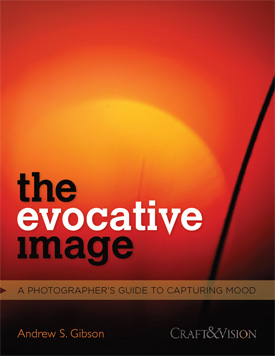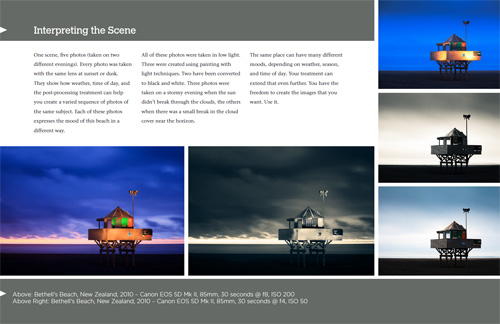
The Evocative Image eBook
The Evocative Image – A Photographer’s Guide to Capturing Mood, by Andrew S. Gibson is an interesting and very valuable eBook offering techniques you can use to inject mood and atmosphere into your photographs. The example photos are truly amazing along with the explanations of how they were captured.
It is relatively easy to take a sharp, well-exposed photo with the latest digital cameras. But how do you take it a step further and capture an image that encompasses the mood you felt at the time?
There are lots of ways to express the feelings that a certain location awoke in you. They all involve creative input from the photographer. By exploring these techniques you will stop “taking” photos and start “making” them instead.
Topics Covered:
- Introduction: What is Mood?
- Interpreting the Scene
- The Golden Hour
- Sunrise, Sunset
- The Blue Hour
- Become the Master of Low Light
- Into the Light
- The Power of Colour
- Creative Exercise: Use a Limited Palette
- Take Control of Colour

Page from The Evocative Image
- Creative Exercise: Play with Colour Temperature
- Overexpose
- Creative Exercise: Expose to the Right
- Do the Opposite of What You’re Supposed to Do
- Slow Shutter Speeds
- Long Shutter Speeds
- High ISO
- Fragments and Details
- The Importance of Backgrounds
- Creative Exercise: Backgrounds
- Dark Backgrounds
- Wide Apertures
- Creative Exercise: Wide Apertures
- The Power of Telephoto Lenses

A Photographer’s Guide to Capturing Mood
Gibson says, “Mood isn’t confined to the world’s beauty spots. Even the most “ordinary” of locations has mood if you catch it at the right time. It may be at sunset, or during a storm, or in the middle of winter when everything is wrapped in ice and snow. Part of the art of photography is capturing the extraordinary in the ordinary. Searching out the mood of a place or subject, no matter where it is, is part of that process.
Like This Article?
Don't Miss The Next One!
Join over 100,000 photographers of all experience levels who receive our free photography tips and articles to stay current:






Leave a Reply